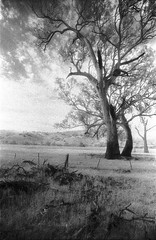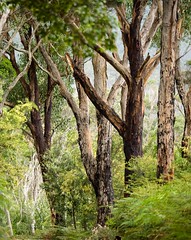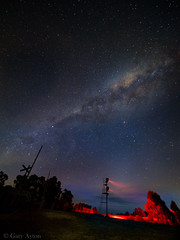These are further thoughts to my previous blog on Olympus selling off their Imaging Division and their Micro Four Thirds camera and lens business.
As outlined in the previous post there are many factors which have conspired to make Olympus cameras a loss making business over the past few years, but there is one that I thought should be elaborated upon – sensors.
Sensor technology has always been a weak point for Olympus cameras, particularly in comparison to full frame sensors.
Part of this is that the sensor being a lot smaller, for the same number of pixels, will need to have smaller pixels and with equivalent sensor design technology this means lower high ISO performance and image noise which the media constantly harp on about.
For me, I shoot 99% of my imagery below ISO 800 so it is a mute point.
Nothing grows under a big tree
A major stumbling block for Olympus though is that despite all of its wonderful innovation and class leading technologies and lenses, Olympus does not make sensors.
Ever since Kodak went under, it has always relied upon its direct competitors. In the Four Thirds and early Micro Four Thirds period it was Panasonic sensors, and there was always a perception that it seemed Panasonic kept the best sensors for themselves and delayed the offerings to Olympus.
This presumably created a rift between the two companies and Olympus moved over to Sony sensors which are the class leading sensors also used by Nikon. In return, Olympus gave its class leading sensor image stabilisation technology to Sony which helped paved the way for Sony’s mirrorless success.
The problem is that, whilst Sony has been rapidly improving its own sensors, we have not seen a new sensor designed for Micro Four Thirds for quite a few years, indeed, the recent E-M1 Mark III has the same sensor as the previous model which was a substantive disappointment to the market.
One could ask, why didn’t Sony offer Olympus the same sensor as in their class leading 61mp Sony a7RIV full frame camera but at a quarter of the size and a quarter of the cost?
After all, it would have given Olympus a 15mp sensor (plenty enough for sports) but with the same high ISO performance and high dynamic range of the a7RIV, and being a quarter of the size they could have dramatically reduced the rolling shutter issue that plagues most full frame sensors (except the unique Sony a9 series).
Or, they could have provided a 20mp version of that technology with slightly lower high ISO performance.
But instead, Olympus had to stay with their old sensor which is fine up to ISO 3200-6400 but that is it. Olympus made the most of this sensor and it is adequate for the far majority of photography, but it does allow the market to perpetuate negativity which has overwhelmed the many unique benefits Olympus cameras do bring to the photographer.
Now of course, it may have been a decision made by Olympus as they had too many older sensors and instead of using these in the entry level cameras and buy new ones for their high end cameras they stuck with old sensors in them – short term economics vs long term market decline due to poor reputation – I don’t think Olympus would have done this.
I have seen this type of competitive dependency cripple or destroy many companies, a key example is how Microsoft has impacted most of its competitors – for instance the Borland’s superb programming tool Delphi was innovative and far superior to anything Microsoft produced in the 1990s, yet it was always dependent upon Microsoft’s changes to Windows and so there was always a delay in rolling out updates to manage the new features. But it didn’t stop their, Microsoft then poached the key programmers and set about creating a new language, C# and programming tool thanks to the ex-Borland wizard.
This is another reason why Nikon in particular will face an uphill battle to compete with Sony now that Sony has such a stronghold on the mirrorless arena. In the beginning Sony needed to be nice and non-threatening, but now the world has changed, Sony is a leader in cameras and lenses in their own right, profits will be hard fought and being nice to other companies just may not be the way of the future.
Sony is already signalling a form of price arrogance to the market – each of their cameras have been introduced at even higher price points – their Sony a7RIV sells for $AU5600 RRP just so you can get your hands on their latest AF technology, whether or not you actually need 61mp. Their 24mp Sony a9II sports camera comes in at a whopping $AU7478 RRP. Plus just try and afford any of their full frame telephoto lenses capable of working reasonably well on an a7RIV resolution – their Sony FE 100-400mm f/4.5-5.6 which comes in at a whopping $AU4098 RRP and is almost twice as heavy.
If you want the best, you are going to have to pay for it dearly – that is what happens when competition is destroyed.
I took the “best” out today for some macro work as there was no wind, arrived at my destination and swapped in an extension tube for my 90mm tilt shift lens and despite care a large dust particle became stuck on my sensor ending my excursion prematurely as I didn’t bring my sensor cleaning kit as I would never have needed it with my Olympus – but the Sony is renown for needing a sensor clean before each shoot. People just don’t realise how good the Olympus cameras are and that is a pity because their future is now with a company that may not tolerate losses.
Canon do make their own sensors and although they have struggled to keep up with Sony’s technology in particular with respect to dynamic range, they are probably big enough to manage this.




































































